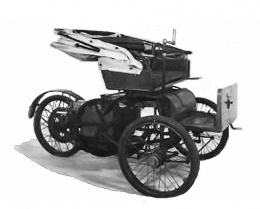Miari Giusti

1896 – 1898
Miari Giusti was founded on August 4th, 1896 an Italian automotive manufacturer based in Padua with operations in 1896 through 1898. The inventions of Prof. Enrico Bernardi whould be implemented and put into practice. Bernardi was one of the forefathers of the internal combustion engine and the builder of the first Italian car. In fact, the vehicle was a motorized tricycle. Miari & Giusti, was the first automobile company in Italy.
There activity, at Miari Giusti, also produced limited numbers of engines with power ranging from 1.5 to 4 Hp. From the 5th of May 1899, the firm continued under the name of Societa Italiana Bernardi.
The company was founded by two young entrepreneurs from Veneto, engineers Giacomo Miari and Francesco Giusti, and planned to build a car move industrially powerd by a gasoline engine, which was created in the same year by Enrico Bernardi. The purpose bought factory located in Via San Massimo in Padua, the location of Lanificio Marcon, was destroyed by fire in 1892.
In the infancy of Miari & Giusti, the first Italian automotive company was to represent by deciding to design, build and industrialize the car totally independently. Regarding the industrialization of the product itself, it should be said, in the same year, 1894, the Italian-German Costruzioni Meccaniche di Saronno company, had begun the production of a Peugeot car under license.
In 1896 the company changed its name to Motori Bernardi, Miari, Giusti & C., specializing in building cars with three wheels and, later, four wheels.
On May 5th, 1898, the company was placed in liquidation and, two days later taken over by Società Italiana Bernardi which continued the production of cars. July 17th, the race "Torino-Asti-Alessandria-Turin", the International Competition of vehicles, the tricycle designed by Antonio Giusti & Miari Nosadini, driven by engineer Bernard, won the 2000 Lira prize for the International Award of Speed. The results of this reace, which covered the 190 km circuit 9 times in 47 minutes at an average of speed of 19.42 km/h, despite a puncture and subsequent rupture of the transmission.
A further demonstration of the quality of the car was seen in 1899, with the completion of a distance of 60,000 km, with no engine or mechanical failure.
However, good quality construction did not determine the success of the product and the company was placed into liquidation in June 1901, after building a hundred cars with both three and four wheels.
Send what you have to:
| Car Information and Photos by Marque: A - B - C - D - E - F - G - H - I - J - K - L - M - N - O - P - Q - R - S - T - U - V - W - X - Y - Z |
| Motorcycle Information and Photos by Marque: A - B - C - D - E - F - G - H - I - J - K - L - M - N - O - P - Q - R - S - T - U - V - W - X - Y - Z |